How To Do a Website Audit to Improve SEO & User Experience: 11 Steps
If you click to purchase a product or service based on our independent recommendations and impartial reviews, we may receive a commission. Learn more
The word audit doesn’t exactly invoke excitement, but if you want to grow your business online, it’s something that any website owner will need to do at some point. That’s because it’s a basic SEO practice that can really improve overall user experience and site performance.
And isn’t that what you want? A better chance of appearing in search engines, with the people who arrive on your site enjoying their experience? With that in mind, the only question left is how do you do a website audit?
That’s the purpose of this guide, which goes through the 11 important steps of performing a website audit to help improve many aspects of your website. Let’s get stuck in!
What Is a Website Audit?
A website audit is like giving your site a health check. It’s a comprehensive review that assesses how well your website is performing in search engine optimization (SEO) and user experience (UX).
Think of it as a diagnostic tool that is designed to uncover hidden issues that impact your site’s visibility and user-friendliness.
Website Audit Checklist: Step-By-Step
The purpose of a website audit is to spotlight areas for improvement so your website is firing on all cylinders. Let’s take a look at how you can do just that.
1) Define Your Website Audit Goals
Before getting your website audit underway, set clear, specific goals. Why are you auditing your website? Is it so you can nail the SEO basics and climb higher in the search engine rankings? Is it to increase conversion rates or ensure your site is mobile-friendly? Perhaps it’s a mixture of all three.
These are common objectives, but as a small business owner, the most important thing is to make sure that your goals suit your unique needs. There’s no point in doing an audit if you don’t know what you want to get out of it.
By pinpointing what you want to achieve, you can focus your efforts more effectively and make your audit a strategic tool to elevate your online presence rather than a simple box-ticking exercise.
2) Gather Your Tools and Resources
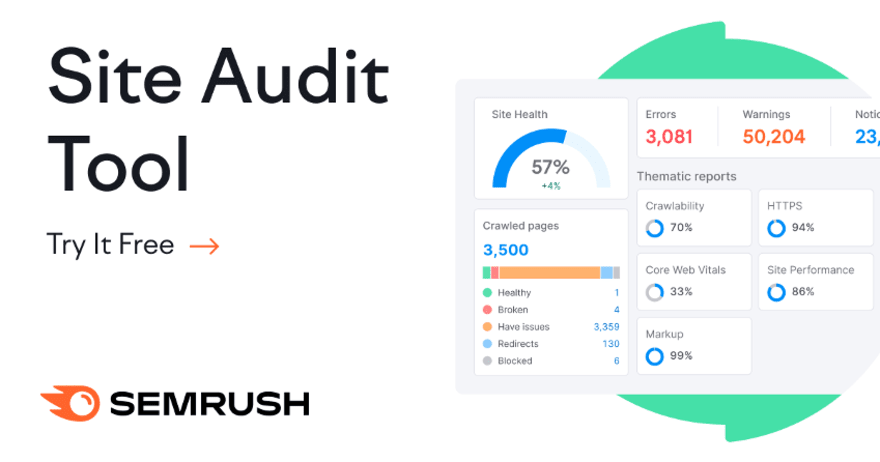
You’ve got your audit goals sorted, which means it’s now time to gear up with the essential tools to help you figure out what exactly you need to audit. Google Analytics and Google Search Console are your go-tos, providing the lowdown on your site’s traffic, user behavior, and how you’re doing in search.
But don’t stop there. You can ramp up your audit with powerhouse tools like SEMrush or Ahrefs. Think of these as your website’s personal trainer, spotting SEO slip-ups, broken links, and UX hiccups.
To get started, set up free accounts on Google Analytics and Search Console and integrate them with your website. As for SEMrush or Ahrefs, pick one that aligns with what you want to achieve and your budget. Once these tools have been set up, they’ll act as your audit’s guiding star, steering you towards real, impactful enhancements.
More Information: Check out our article on how to add Google Analytics to your website for a step-by-step guide to getting started.
3) Collaborate With Your Team
There’s no reason to do your website audit alone. In fact, bringing in a team can help untangle the technical and SEO intricacies of a website. Whether it’s seasoned pros or members of your team who can spot something you’ve missed, two (or more) pairs of eyes are better than one.
Afer all, they’ll bring different perspectives and skills to the table with the aim of giving your website audit the best possible outcome. Not only that but incorporating more people means everyone is on the same page in their bid to give your website a once-over that helps it perform to a high level.
4) Content Audit
When it comes to a website audit, sifting through your content is a bit like sorting through your wardrobe – you need to figure out what’s working, what’s not, and what’s missing.
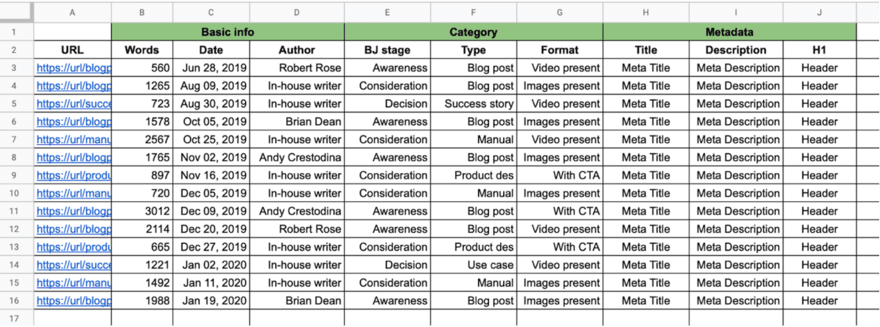
Identify Content Gaps
Start by mapping out your content. Are there topics your competitors are covering that you’re missing? Maybe there are customer questions left unanswered. If so, pinpoint these gaps because they’re golden tickets to providing value your competitors might be missing.
Research and Update Content
Now, turn detective on your existing content. Is it up-to-date, relevant, and engaging? Old, outdated content can be a big turn-off for visitors and search engines alike. Give your content a refresh – a new coat of paint if you will – so that it’s relevant and appealing.
Check for Duplicate Content
Double-check for any content that’s repeating itself on your site. Search engines aren’t fans of duplicate content. For them, it’s like wearing the same outfit to every party. Unique, original content is key to standing out in the crowd and boosting your SEO.
5) Technical Audit
Technical audits act as your website’s MOT. They make sure everything is ticking over nicely under the bonnet.
Kick things off with a page speed check. Slow pages are like long queues at a shop, and no one likes waiting to get what they want. Slow loading times also make visitors more likely to bounce off your pages, losing you precious traffic. Tools like Google’s PageSpeed Insights are your go-to for this and will provide insights about how quickly content appears on your web pages.
Next, give your SEO a once-over. Are your title tags and meta descriptions up to scratch? Tools like Moz or Yoast SEO can spot if anything’s amiss. It’s also important to search for any broken links or 404 errors – they’re the annoying potholes in your website’s journey. A tool like Broken Link Checker can help track these down.

Lastly, don’t forget about your mobile visitors. With an increasing number of people browsing on their phones (more than 55%, in fact), making sure your site is mobile-friendly is essential. You can use Google’s Mobile-Friendly Test to see if your site’s a hit on handheld devices.
It might seem like a lot, but getting these technical bits right means your website will be raring to go.
6) User Experience (UX) Audit
A user experience (UX) audit is all about walking a mile in your visitors’ shoes. Let’s start with navigation: is moving around your site easy, or is it more like navigating a maze? Tools like Hotjar can help you see how visitors interact with your site and give you vital feedback about usability.
Just like with the technical audit, use Google’s Mobile-Friendly Test to see how well mobile design is on your site. It’ll help you understand whether people can effortlessly use your site regardless of the device they use or if they prefer desktop over mobile. If it’s the latter, you’ll need to do some work on boosting the mobile UX experience.
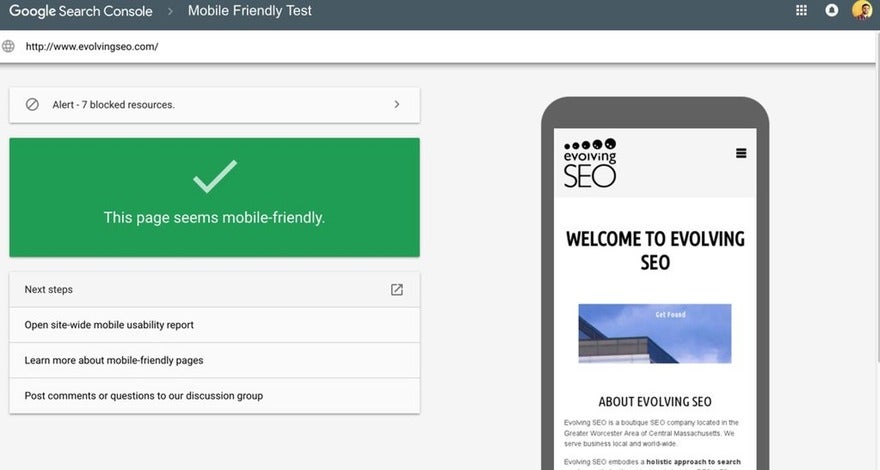
Readability access is also important, and your site needs to be clear and legible, like a well-written book. Ensure fonts, colors, and layout are easy on the eyes. And don’t forget those CTAs (Call to Action)—they should stand out and encourage users to make a decision, whether it’s a purchase, signing up for a newsletter, or registering interest. Test different designs and placements to see what catches the eye and encourages clicks.
A UX Audit isn’t just about making your site look pretty. It’s also about creating a welcoming, intuitive space that visitors love to explore.
7) On-Page SEO Audit
The goal is to get your website featured on search engines, from Google to Bing and everything in between. To do this, you’ll need to go through a process that ensures your on-page SEO is in tip-top condition.
Begin with your title tags and meta descriptions, which need to be snappy, engaging, and descriptive of the content the user is about to click on. Headings are next. Use H1, H2, H3s, and so on to structure your content like a well-planned story, making it easy for search engines and users to follow.

Don’t overlook alt text for images, either. Not only is it SEO-friendly, but alt-text is also inclusive and acts as a descriptor for visuals. This is great for visitors with visual impairments, allowing them to use your description to get a better idea of the image.
Internal linking is also something you should pay attention to. It helps you lay down breadcrumbs to keep visitors exploring your site, moving seamlessly from one piece of content to another. This minimizes the chance of them navigating away from your website too quickly.
Lastly, keep your URLs neat and descriptive, so that they’re easy to understand at a glance. And to really shine, sprinkle some schema markup into your pages. It’s the language search engines use to read and understand the content on your pages.
More information: If you want to get a headstart on your search engine optimization, check out our list of the best website builders for excellent SEO.
8) Off-Page SEO Audit
An Off-Page SEO audit is different from an on-site one in that it requires you to look beyond your website to the wider web. On-page SEO is all about the elements you can control, whereas off-page SEO focuses on things that are influenced by other people.
But that doesn’t mean matters are completely out of your hands – there are still some things you can do to improve your off-page SEO. First, focus on your backlinks. These are like digital endorsements from other sites. And the higher domain authority these sites have, the better. You can use tools like Ahrefs or Majestic to analyze the quality and quantity of these links.
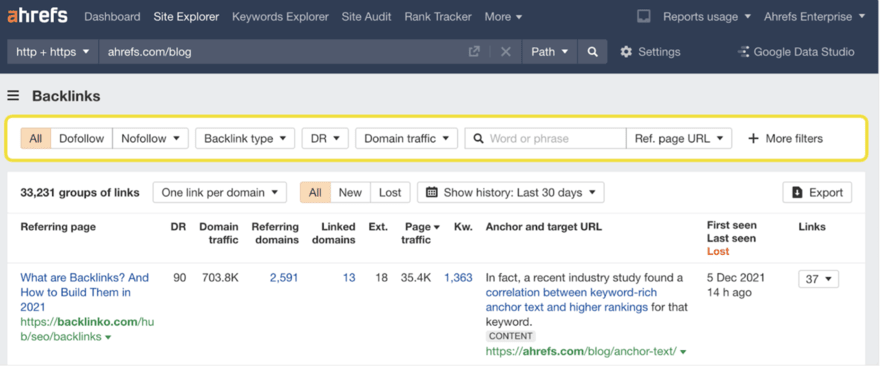
Next, scope out your social media presence. Nowadays, this is one area you can’t afford to neglect – it’s basically your website’s megaphone, amplifying your content across the internet. Now could be a really good time to take a look at your social media strategy and see where improvements can be made.
Also, keep an eye on your online reputation and what customers are saying about you. You can do this by checking things like Google Reviews. And if your competitors are performing better than you, learn from them! Take a look at what they’re doing well and where you can edge ahead. It’s a bit like doing a bit of friendly neighborhood watch, only for SEO.
9) Track Analytics & Metrics
There’s no point doing an audit if you can’t then check in on any changes further down the line. This is where tracking your website’s analytics and metrics comes in. This data lets you know what’s working and what isn’t. Start with monitoring your website traffic to see who’s visiting. You could even conduct a specific CRO audit too, as this will help you formulate strategies designed to turn casual browsers into dedicated, purchasing customers.
Bounce rate is another key metric to monitor. This is how frequently people leave your website. The average bounce rate for an ecommerce business is between 20% and 45%, so anything higher than this probably means visitors aren’t getting what they want from your website.
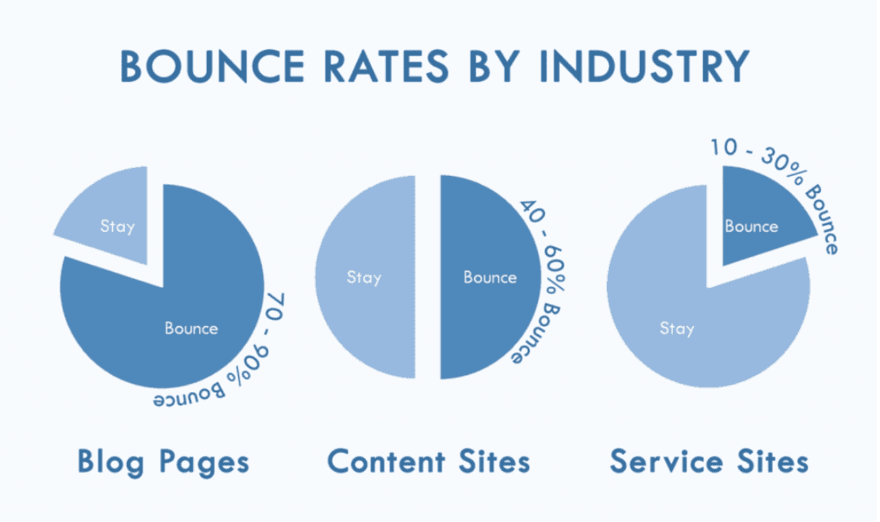
10) Implement Changes
You’ve spent all that time auditing your website, and now it’s time to put those changes to the test. The first goal is to implement any technical fixes, such as speeding up your website and removing annoying bugs.
Refreshing content is also important here so that it’s up-to-date and meets the latest search engine requirements. This is also the time to apply improvements to elements like title tags and backlinks. Above all else, it’s important to make sure your content is as engaging as possible.
Let’s not forget about security. Having a secure website helps mitigate data protection issues and ensures that both your and your visitor’s data is safe.
When implementing changes as a result of your audit, be they big or small, it’s important to remember that each one is a step towards a better website that’s efficient and user-friendly.
11) Monitoring & Ongoing Maintenance
Your website audit isn’t a one-and-done deal. Think of it as the start of an ongoing journey. Regularly scheduled audits help keep on top of things, making sure your website gets a routine health check.
Consistently track your progress to celebrate the wins and tweak what’s not quite hitting the mark. Staying current with industry trends is also key, especially because things move fast, and you need to keep pace.
Also, be ready to adapt to search engine algorithm changes. Search engines can throw a few curveballs, but staying agile means you can swing into action as needed. Ongoing maintenance nurtures your website and keeps it growing and evolving.
Summary: 11 Steps to Improving SEO and User Experience
Performing a thorough website audit is essential for enhancing your site’s SEO and user experience. With the key steps named in this article, from defining your goals to on-page SEO, you can make sure your site is ready to take on the world and performs to its full potential.

Leave a comment